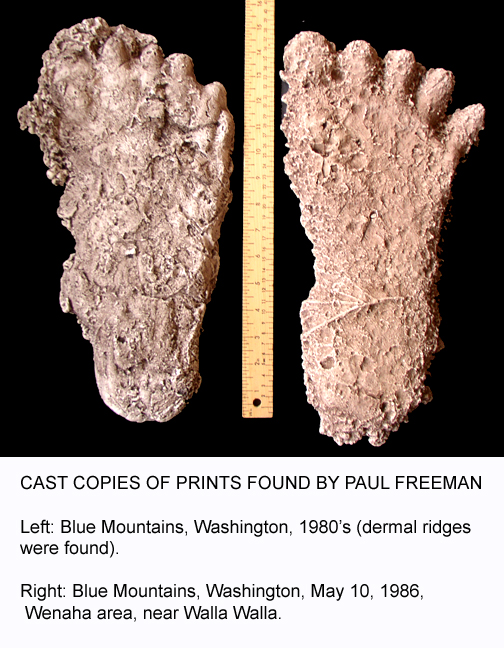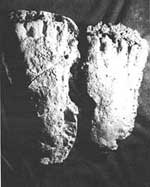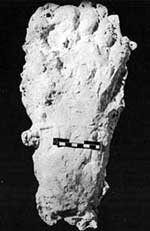
November 15, 2007
A new article about Professor Jeff Meldrum’s investigations can be found in the December 2007 issue of Scientific American Magazine.
The article involves the late Paul Freeman, and for more on Freeman, click here.

Here’s a preview summary of the Scientific American Magazine article, from their website:

One overcast Sunday morning in 1996, Jeffrey Meldrum and his brother drove to Walla Walla, Wash., to see if they could find Paul Freeman, a man renowned in Bigfoot circles as a source of footprint casts. Meldrum–who has followed Bigfoot lore since he was a boy–had heard that Freeman was a hoaxer, “so I was very dubious,” he recalls.
The brothers arrived unannounced, Meldrum says, and chatted with Freeman about his collection. Freeman said he had found tracks just that morning, but they were not good, not worth casting. The brothers wanted to see them regardless.
“I thought we could use this to study the anatomy of a hoax,” Meldrum says. Instead Meldrum’s visit to a ridge in the Blue Mountains set him firmly on a quest he has been on since.

Meldrum, an associate professor of anatomy and anthropology at Idaho State University, is an expert on foot morphology and locomotion in monkeys, apes and hominids.
He has studied the evolution of bipedalism and edited From Biped to Strider (Springer, 2004), a well-respected textbook. He brought his anatomical expertise to the site outside Walla Walla.
The 14-inch-long prints Freeman showed him were interesting, Meldrum says, because some turned out at a 45-degree angle, suggesting that whatever made them had looked back over its shoulder. Some showed skin whorls, some were flat with distinct anatomical detail, others were of running feet-imprints of the front part of the foot only, of toes gripping the mud.
Meldrum made casts and decided it would be hard to hoax the running footprints, “unless you had some device, some cable-loaded flexible toes.”Insights: Bigfoot Anatomy; December 2007; Scientific American Magazine; by Marguerite Holloway; 2 Page(s)

Photographs courtesy of Vance Orchard; all related to Paul Freeman’s legacy.
About Loren Coleman
Loren Coleman is one of the world’s leading cryptozoologists, some say “the” leading living cryptozoologist. Certainly, he is acknowledged as the current living American researcher and writer who has most popularized cryptozoology in the late 20th and early 21st centuries.
Starting his fieldwork and investigations in 1960, after traveling and trekking extensively in pursuit of cryptozoological mysteries, Coleman began writing to share his experiences in 1969. An honorary member of Ivan T. Sanderson’s Society for the Investigation of the Unexplained in the 1970s, Coleman has been bestowed with similar honorary memberships of the North Idaho College Cryptozoology Club in 1983, and in subsequent years, that of the British Columbia Scientific Cryptozoology Club, CryptoSafari International, and other international organizations. He was also a Life Member and Benefactor of the International Society of Cryptozoology (now-defunct).
Loren Coleman’s daily blog, as a member of the Cryptomundo Team, served as an ongoing avenue of communication for the ever-growing body of cryptozoo news from 2005 through 2013. He returned as an infrequent contributor beginning Halloween week of 2015.
Coleman is the founder in 2003, and current director of the International Cryptozoology Museum in Portland, Maine.
Filed under Bigfoot, Cryptotourism, CryptoZoo News, Cryptozoologists, Cryptozoology, Evidence, Expedition Reports, Eyewitness Accounts, Forensic Science, Media Appearances, Men in Cryptozoology, Sasquatch